Summary: A nice drawing, two big mistakes, and a failed in-class demonstration. It’s a miracle that this painting came to a satisfying conclusion!

This illustration started as a simple sketch for an in-class demonstration. I’ve been hammering away at the Chris Payne illustration process for some time now. Mixing in elements from here and there trying to derive something similar but my own. It is a bit like a science experiment.
This started as a drawing that I was pretty excited about. Basic sketches based on images gathered online from early in Bo Diddley’s career.
Once the sketch looked good to me, it was transferred onto the illustration board using a digital projector app. I used a both a 2h and 3B pencil.


Sadly, at this point there aren’t any other pictures of the train-wreck that was the in-class demonstration. Suffice it to say, that it was an exercise in going with the flow!
After the drawing was done, it is washed over with some very thin Titan Buff liquid acrylic. This seals the drawing in as well as toning the illustration board. This is a trick I picked up from Sterling Hundley. One of the things to watch out for during the pencil stage is not to use too soft of a pencil because when the Titan Buff is applied it will smear the graphite everywhere.
Usually at this point I would try to paint using watercolors. The idea being that the acrylic seals the board, and you can then lift out the watercolor paints, and get a similar look to Chris Payne’s oil lift out method. But on this particular day…. I decided to “try something new.”
In my own defense, I thought that because Walnut ink was a dye based in that it would be soluble (which is true,) and that it you could reactivate it using water (which is NOT true, as it turns out.) This is what we call a “learning experience.”
The Walnut ink is such a luscious color, and you could almost hear the student’s collective hearts skip a beat when I, with perhaps a little too much bravado, swathed the entire image in ink. While it did stay active for a minute or so, allowing me to rub out some areas in the head… it quickly soaked into the illustration board.
This is point when I became aware of my second mistake.
I had used a Crescent watercolor board instead of the normal illustration board. I thought it wouldn’t matter because of the acrylic wash. The ink soaked right into it. In hindsight, perhaps the acrylic wash had also soaked into the board, and that is why the ink also soaked in and dried so quickly.
The next step was to carve the figure back out by laying in a thin-ish wash of yellow acrylic in the background. From there it was about painting in gouache. There are a few moments where colored pencils were used, but not too much. It’s mostly brush and paint.
Here’s the transition from sketch to final!
And since you’ve been such a good sport for reading along… please enjoy one of the more satisfying moments of creating an illustration… the un-taping!
This was fun to do, and I hope you enjoyed this re-cap of the experience and that you too will go out and try something new with your art. Remember the journey is the prize!
Thank you for visiting!
As ever, I respond well to enthusiasm. Feel free to leave a comment, share with friends, and connect via the Insta-tweet-a-books.

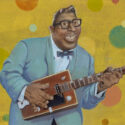
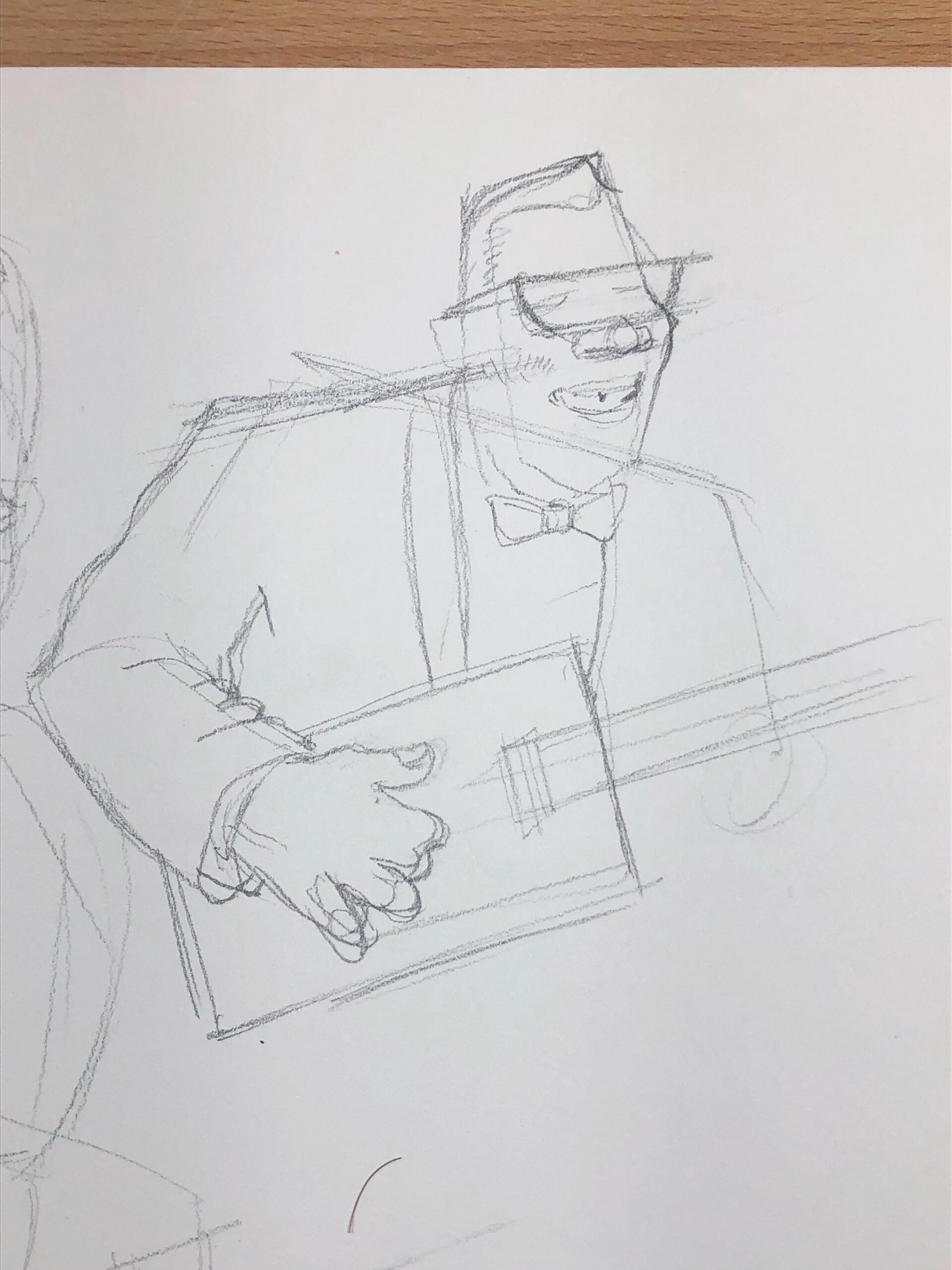
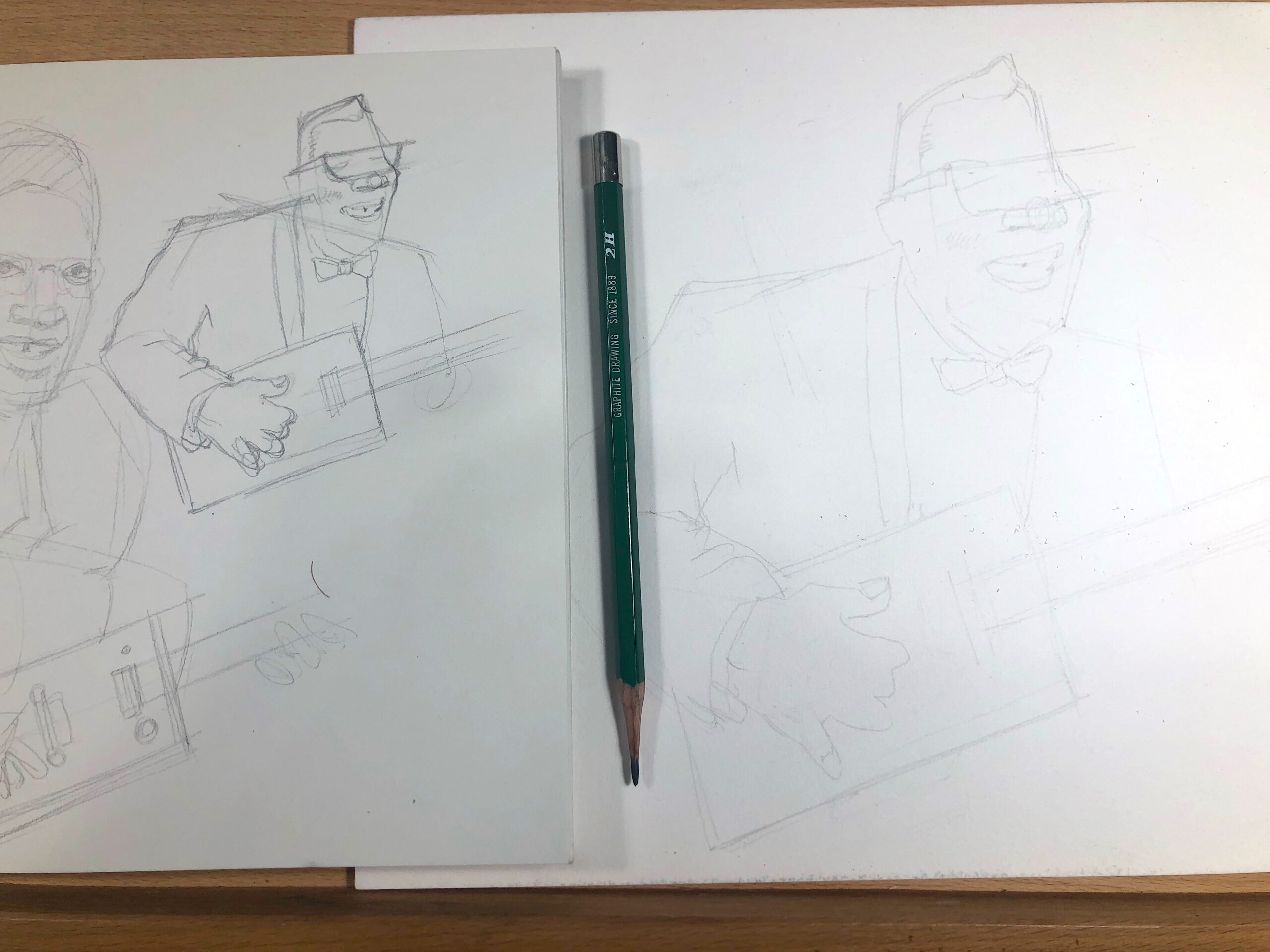

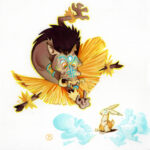
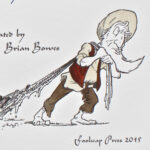

Aha! Soso cool to hear more about the process!!!
I was alone in my ‘screwing up’ a perfectly exciting potential painting . I need to learn a lot about sealing water soluble base drawings and paintings. What I truly loved and appreciated is your honestly and candor about just the art of learning and sharing and being real !!! Thank you for helping me get up and try again and never stop learning
Hi Rebecca, Thank you for your feedback. Yes, sometimes the creative process is about how we can creatively get ourselves out of ‘situation!’
Keep trying new things, and Stay Curious!
Hi Kirsten, thank you for taking the time to read all about it! It’s fun to share the ups and downs with folks like you!
[…] with a giggle. We hope you will find his work as compelling as we do! Speaking of: Read about Brian’s process—from sketch to final product—as he paints this Bo Diddley […]